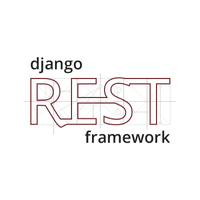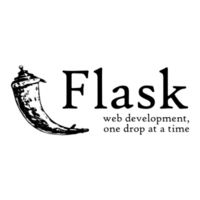Need advice about which tool to choose?Ask the StackShare community!
Django REST framework vs Swagger UI: What are the differences?
Key Differences between Django REST framework and Swagger UI
Django REST framework and Swagger UI are two popular tools used for developing and documenting web APIs. While they both serve a similar purpose, they have some key differences that set them apart.
1. Integration with Django:
Django REST framework is a powerful toolkit for building Web APIs using the Django framework. It seamlessly integrates with Django, allowing developers to build APIs using Django's ORM, models, and authentication system. On the other hand, Swagger UI is a user-friendly interface for exploring and testing APIs that are already built, regardless of the framework used.
2. Documentation Approach:
Django REST framework focuses on providing detailed and customizable documentation for APIs. It generates documentation based on the code itself, making it easier for developers to keep the documentation updated. Swagger UI, on the other hand, relies on API annotations or separate configuration files to generate documentation. This approach allows for more flexibility and customization but may require additional effort to maintain the documentation.
3. Authentication and Authorization:
Django REST framework provides built-in support for various authentication mechanisms, including token-based authentication, session-based authentication, and OAuth. It also supports fine-grained authorization using Django's object-level permissions. Swagger UI, on the other hand, does not provide any built-in support for authentication or authorization. It is primarily focused on API exploration and testing.
4. User Interface Features:
Django REST framework provides a comprehensive set of tools for building APIs, including support for serializers, viewsets, and authentication. It also provides features like pagination, filtering, and sorting out of the box. Swagger UI, on the other hand, is a UI tool designed to interact with APIs. It provides a user-friendly interface for exploring API endpoints, sending requests, and viewing responses.
5. Offline vs Online Usage:
Django REST framework is typically used in offline development scenarios, where the API is built and tested locally before being deployed. It provides a set of tools for quickly building and testing APIs within the development environment. Swagger UI, on the other hand, is often used in online scenarios, where the API is already deployed and accessible. It provides a web-based interface for developers and consumers to explore and interact with the API.
6. Ecosystem and Community:
Django REST framework is part of the larger Django ecosystem, which includes a wide range of high-quality packages and a large community of developers. It benefits from the stability, maturity, and extensive documentation of the Django framework. Swagger UI, on the other hand, has its own ecosystem and community, with a focus on providing a user-friendly interface for working with APIs. It may require additional effort to integrate and maintain within existing Django projects.
In Summary, Django REST framework and Swagger UI differ in terms of their integration with Django, documentation approach, authentication and authorization support, user interface features, offline vs online usage, and their ecosystem and community.
My journey to developing REST APIs started with Flask Restful, and I've found it to be enough for the needs of my project back then. Now that I've started investing more time on personal projects, I've yet to decide if I should move to use Django for writing REST APIs. I often see job posts looking for Python+Django developers, but it's usually for full-stack developers. I'm primarily interested in Data Engineering, so most of my web projects are back end.
Should I continue with what I know (Flask) or move on to Django?
If you want to be a Web developer with knowledge in another frontend and NoSql technology, maybe continue with Flask. However, if you want to create very fast solutions to grow up with a new business and merge these with data analysis and other tools, Django is the answer. Basically read more about the service architecture where you feel more comfortable, Microservice or Monolithic, but please will not married with any because they solve issues to different contexts.
I have just started learning Python 3 weeks ago. I want to create a REST API using python. The API will be used to save form data in an Oracle database. The front end is using AngularJS 8 with Angular Material. In python, there are so many frameworks to develop REST APIs.
I am looking for some suggestions which REST framework to choose?
Here are some features I am looking for:
Easy integration and unit testing, like in Angular. We just want to run a command.
Code packaging, like in java maven project we can build and package. I am looking for something which I can push in as an artifact and deploy whole code as a package.
Support for swagger/ OpenAPI
Support for JSON Web Token
Support for test case coverage report
Framework can have features included or can be available by extension. Also, you can suggest a framework other than the ones I have mentioned.
For starters flask provides a beautiful and easy way to create REST APIs. Also its supported by excellent beginner docs as well as a very active community. Another good thing with Flask is its widely available list of plugins which allow you to build as you go. Its also good in performance and can scale to a quite decent level. However, if you are sure your project is going to be fairly big, it would be better to start with Django as it provides a lot of features out of the box and is extremely stable in performance. Both these frameworks have support for Swagger, JWT, Coverage Report although you have to install plugins for them. Deploying both of these are fairly simple and there is huge documentation available. Django has one of the best documentations I have come across. I hope I was able to answer your queries.
From a StackShare Community member: "I just started working for a start-up and we are in desperate need of better documentation for our API. Currently our API docs is in a README.md file. We are evaluating Postman and Swagger UI. Since there are many options and I was wondering what other StackSharers would recommend?"
I use Postman because of the ease of team-management, using workspaces and teams, runner, collections, environment variables, test-scripts (post execution), variable management (pre and post execution), folders (inside collections, for better management of APIs), newman, easy-ci-integration (and probably a few more things that I am not able to recall right now).
I use Swagger UI because it's an easy tool for end-consumers to visualize and test our APIs. It focuses on that ! And it's directly embedded and delivered with the APIs. Postman's built-in tools aren't bad, but their main focus isn't the documentation and also, they are hosted outside the project.
I recommend Postman because it's easy to use with history option. Also, it has very great features like runner, collections, test scripts runners, defining environment variables and simple exporting and importing data.
Pros of Django REST framework
- Easy to use66
- Browsable api65
- Great documentation53
- Customizable50
- Fast development42
- Easy to use, customizable, pluggable, serializer9
- Python8
- Django ORM7
- FastSerialize5
- Less code3
- Easy implementation2
Pros of Swagger UI
- Open Source49
- Can execute api calls from the documentation34
- Free to use29
- Customizable19
- Easy to implement in .Net14
- Mature, clean spec13
- API Visualization12
- Coverage9
- Scaffolding6
- Easy to use6
- Vibrant and active community5
- Elegant4
- Adopted by tm forum api3
- Clear for React2
- Api1
- Can deploy API to AWS API Gateway and AWS Lambda1
Sign up to add or upvote prosMake informed product decisions
Cons of Django REST framework
- Bad documentation2
- Reimplements Django functionality2
- No support for URL Namespaces1
- Bad CSRF handling0
Cons of Swagger UI
- Need to learn YAML and RAML3
- Documentation doesn't look that good2
- Doesn't generate code snippets in different languages1
- You don’t actually get in-line error highlighting1
- Does not support hypermedia1








































